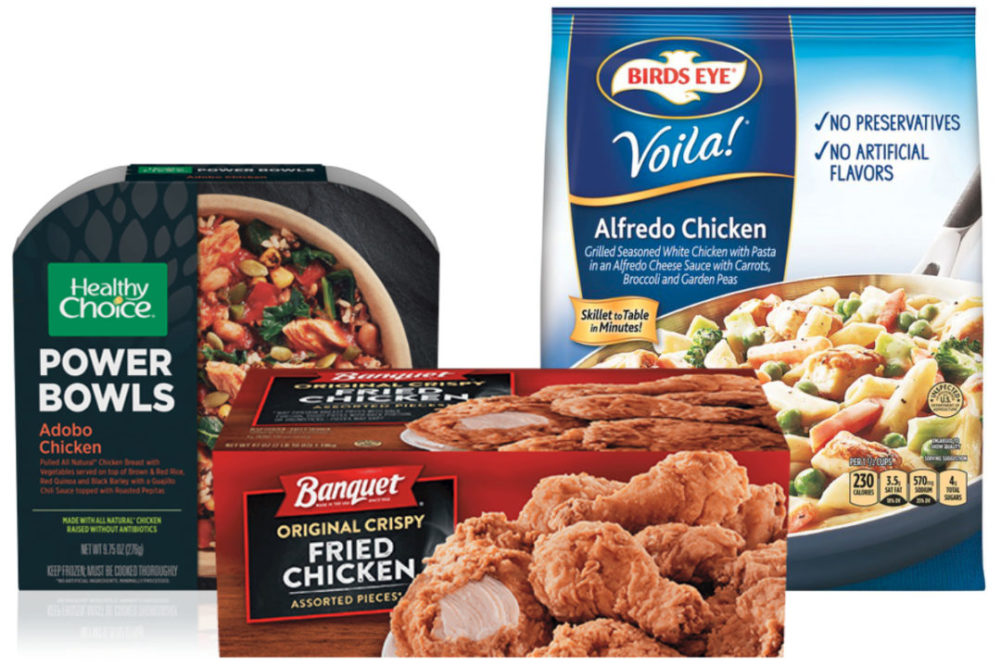NEW YORK — Credit Suisse on Jan. 5 lowered its ratings for Conagra Brands to “underperform” while also lowering its target price for both packaged foods companies.
Robert Moskow, research analyst at Credit Suisse, said Credit Suisse has lowered its target price for Chicago-based Conagra Brands to $34 from $38 and its fiscal year 2022 earnings-per-share estimate to $2.45 from $2.61.
Moskow acknowledged the ability of Conagra’s management to execute an impressive business turnaround and cultural transformation in recent years, including increasing its scale in the on-trend frozen category, launching compelling product innovation, and introducing strong marketing and financial discipline. Even so, he said the company is likely set up for disappointment in fiscal 2022 “because of its overly optimistic view regarding the sustainability of above-normal at-home food consumption during the pandemic.”
Moskow said the sales and earnings gains scored by Conagra during the pandemic are unlikely to continue as consumers return to prior meal preparation patterns.
“By our math, about 35% of Conagra’s growth in 2020 came from brands that were out of favor with consumers before the pandemic (e.g. Chef Boyardee, Hunts, Duncan Hines) and declining at a 2% annual rate or more,” he said. “EPS is probably 12% to 13% higher than where it would have been if not for the pandemic.”
Conagra’s management has set an EPS target of $2.66 to $2.76, a level that Moskow said may create incentive to limit investment.
“Unlike its annual incentive plan, the company’s three-year, long-term incentive plan focuses the executive team exclusively on EPS despite the fact that investors place more value on sales growth,” he said. “In our view, this provides management with an unusually strong incentive to maintain its earnings base through cost-cutting as pandemic-fueled sales gains inevitably unwind. If the company grows its earnings while its sales are declining, we believe the stocks’ valuation multiple will compress.”
Moskow said Conagra’s modern approach to brand building also increases its risk profile. Specifically, he pointed to the company’s strategy to shift marketing dollars away from traditional advertising and into retailers’ slotting fees and marketing programs.
“It is hard to share management’s conviction that its brands will retain consumers who tried them during the pandemic when advertising is declining,” he said.


